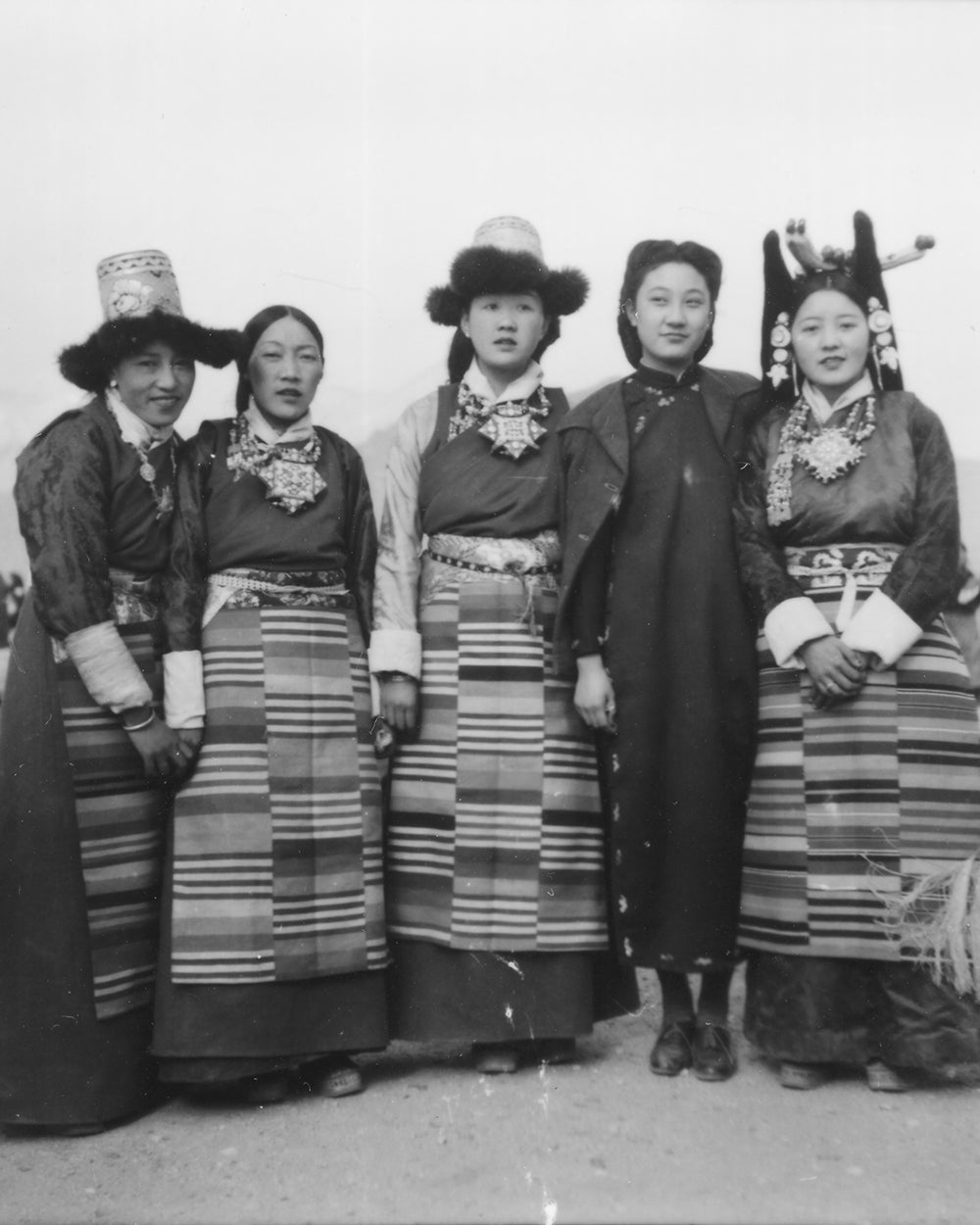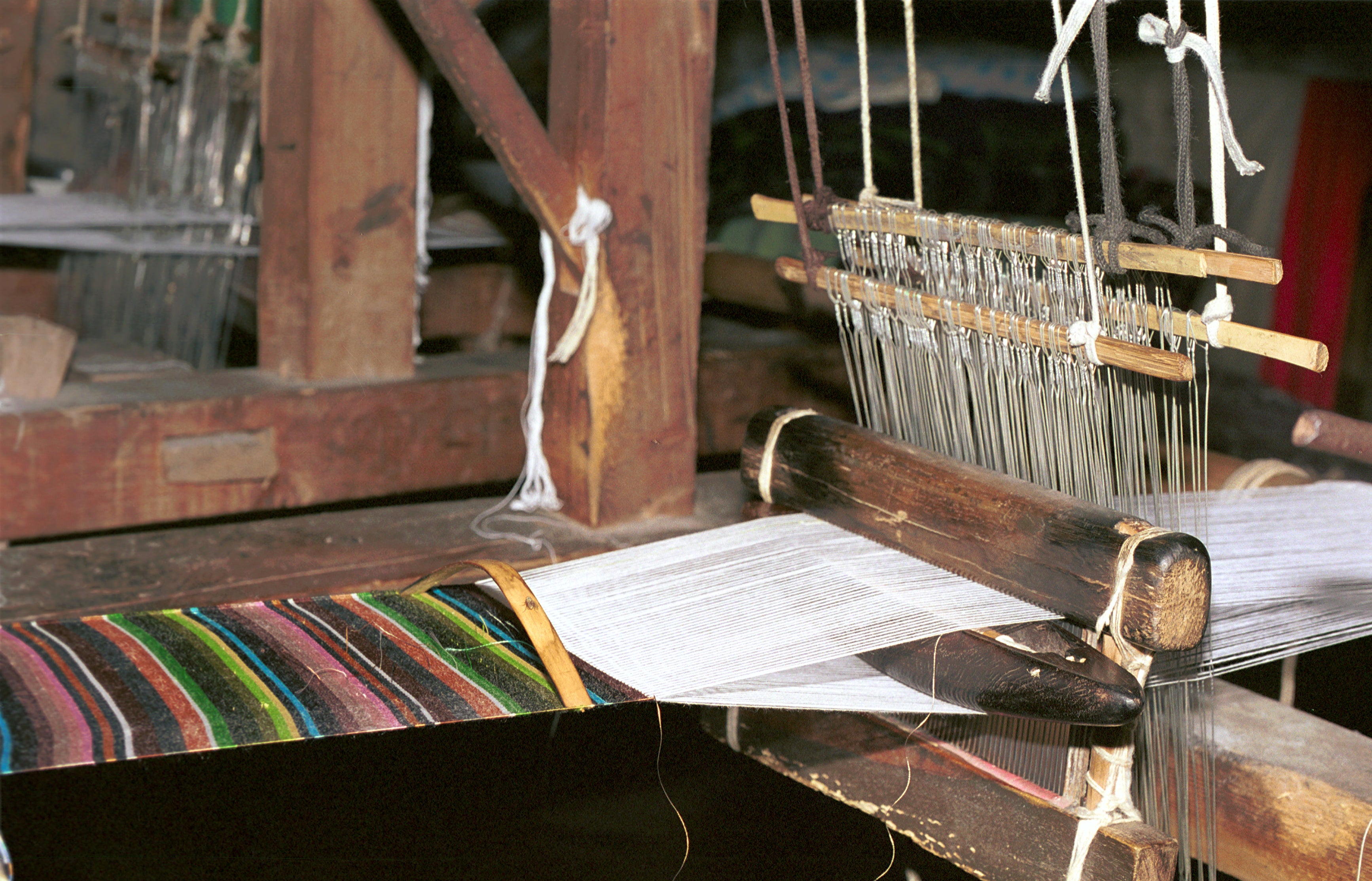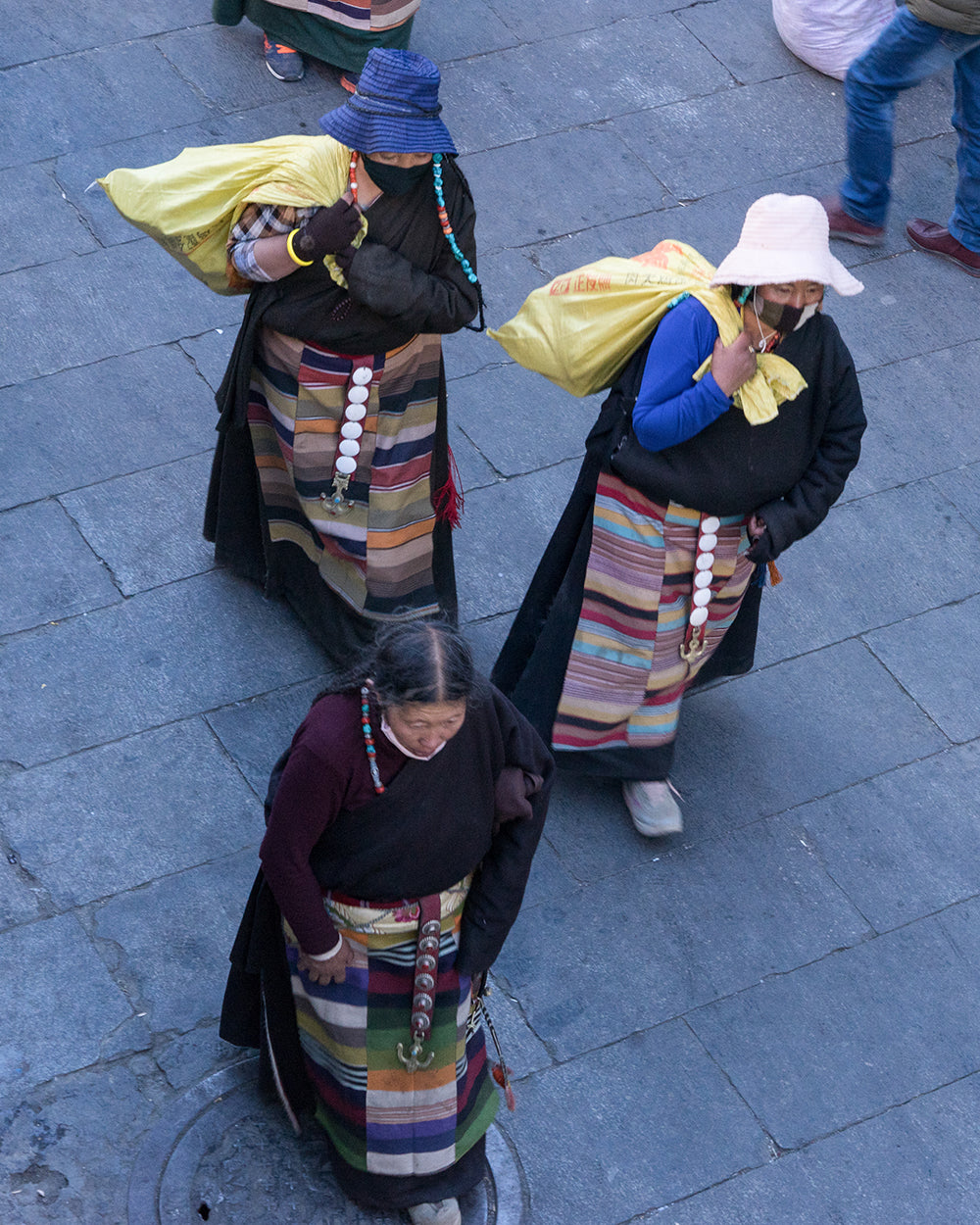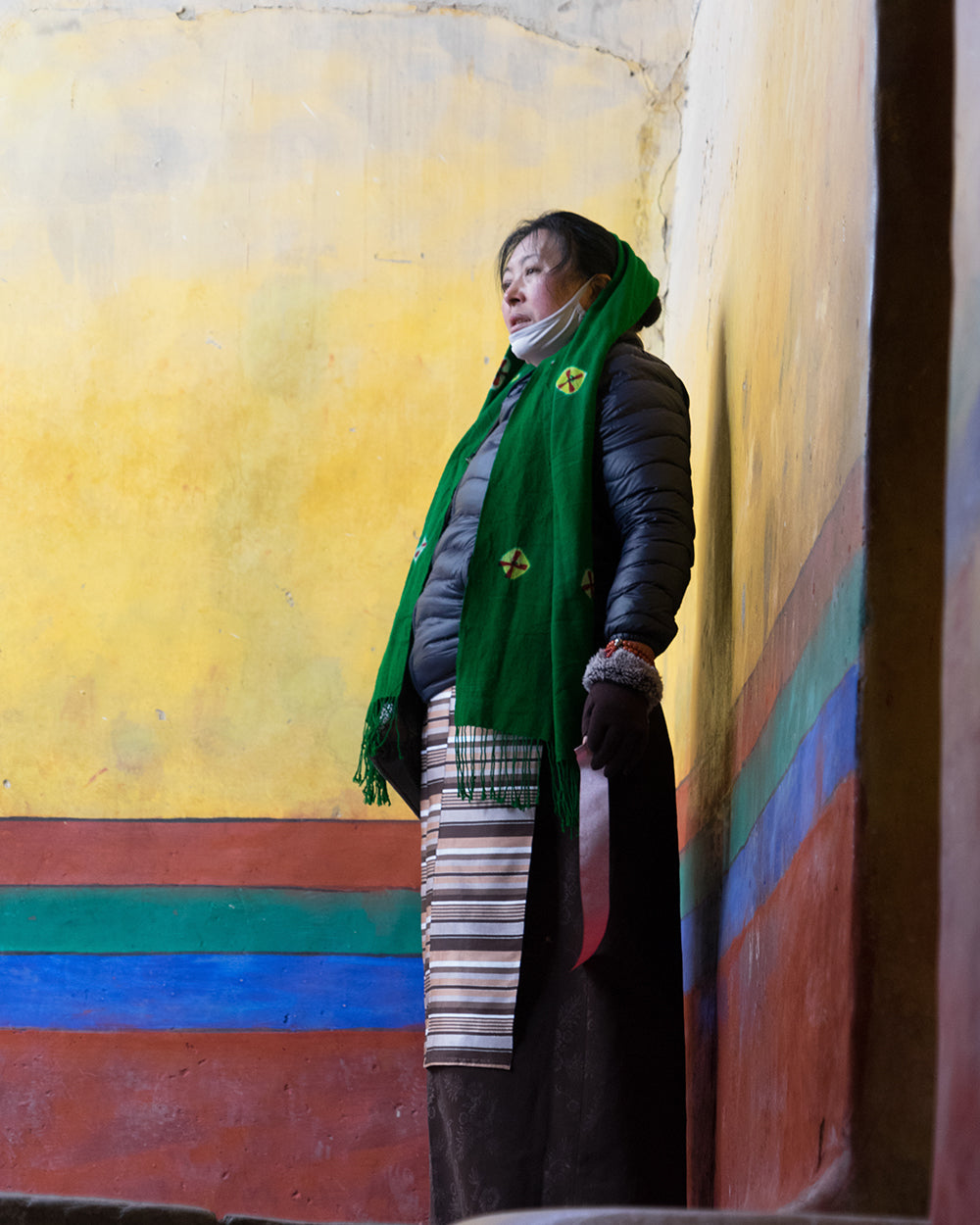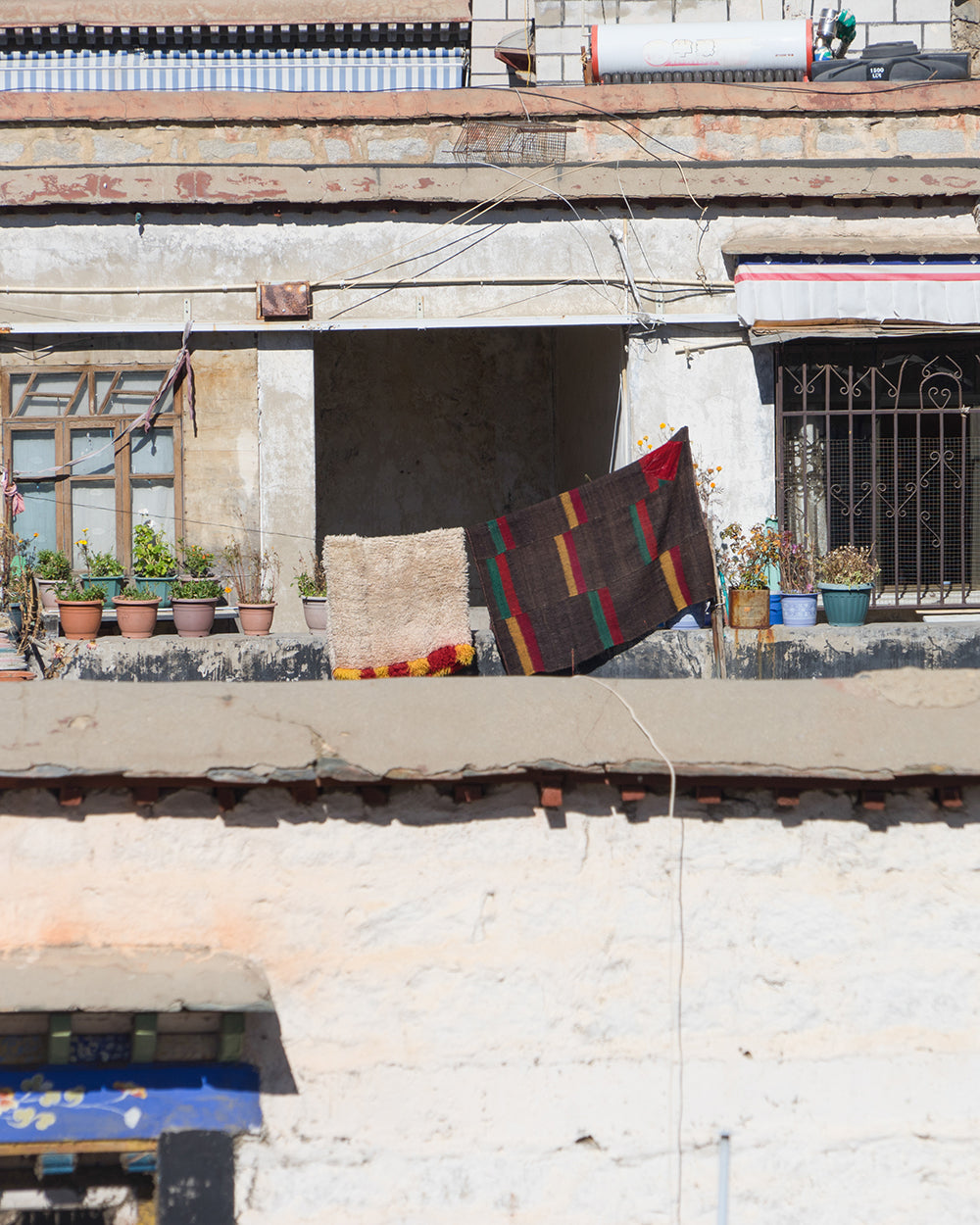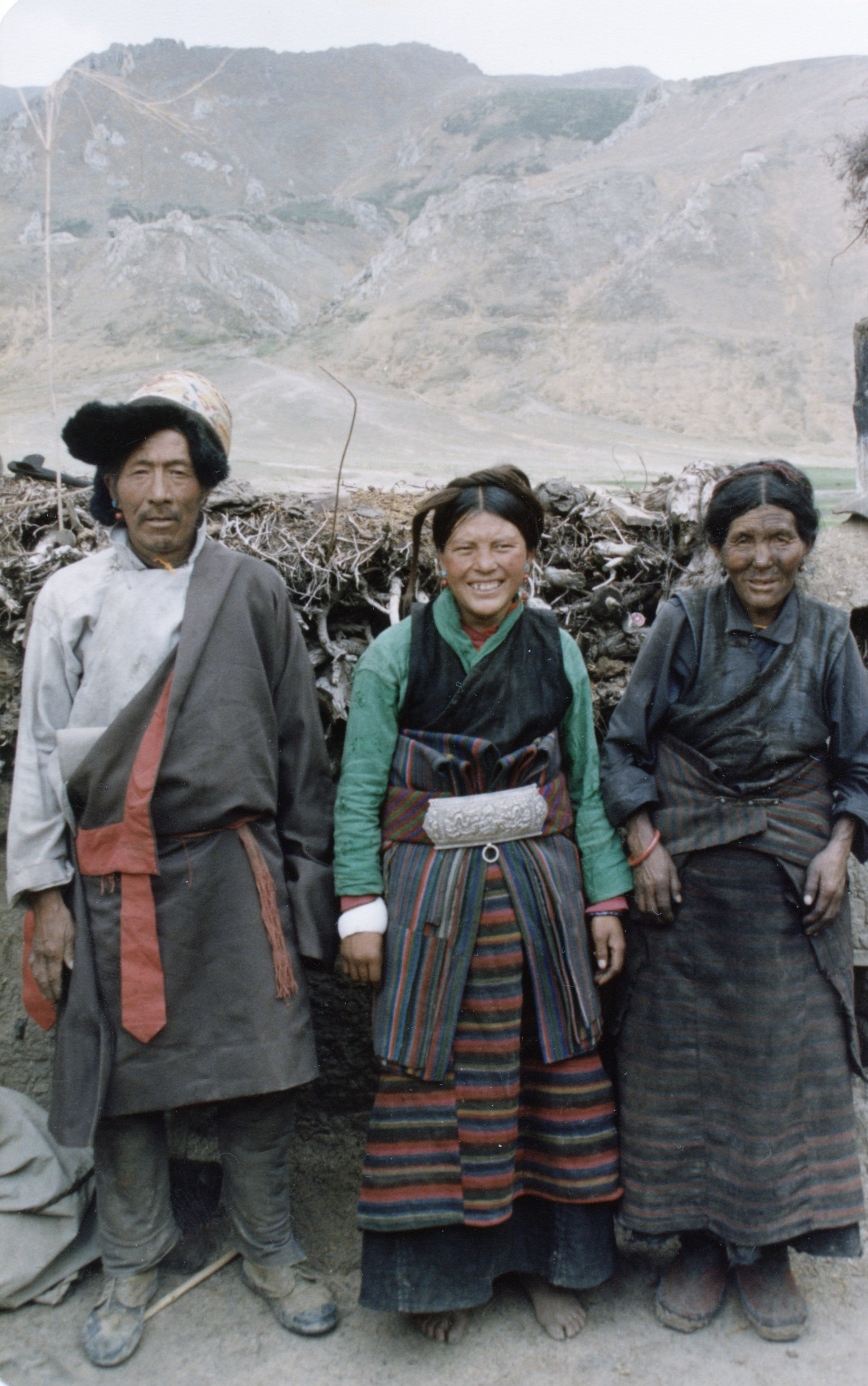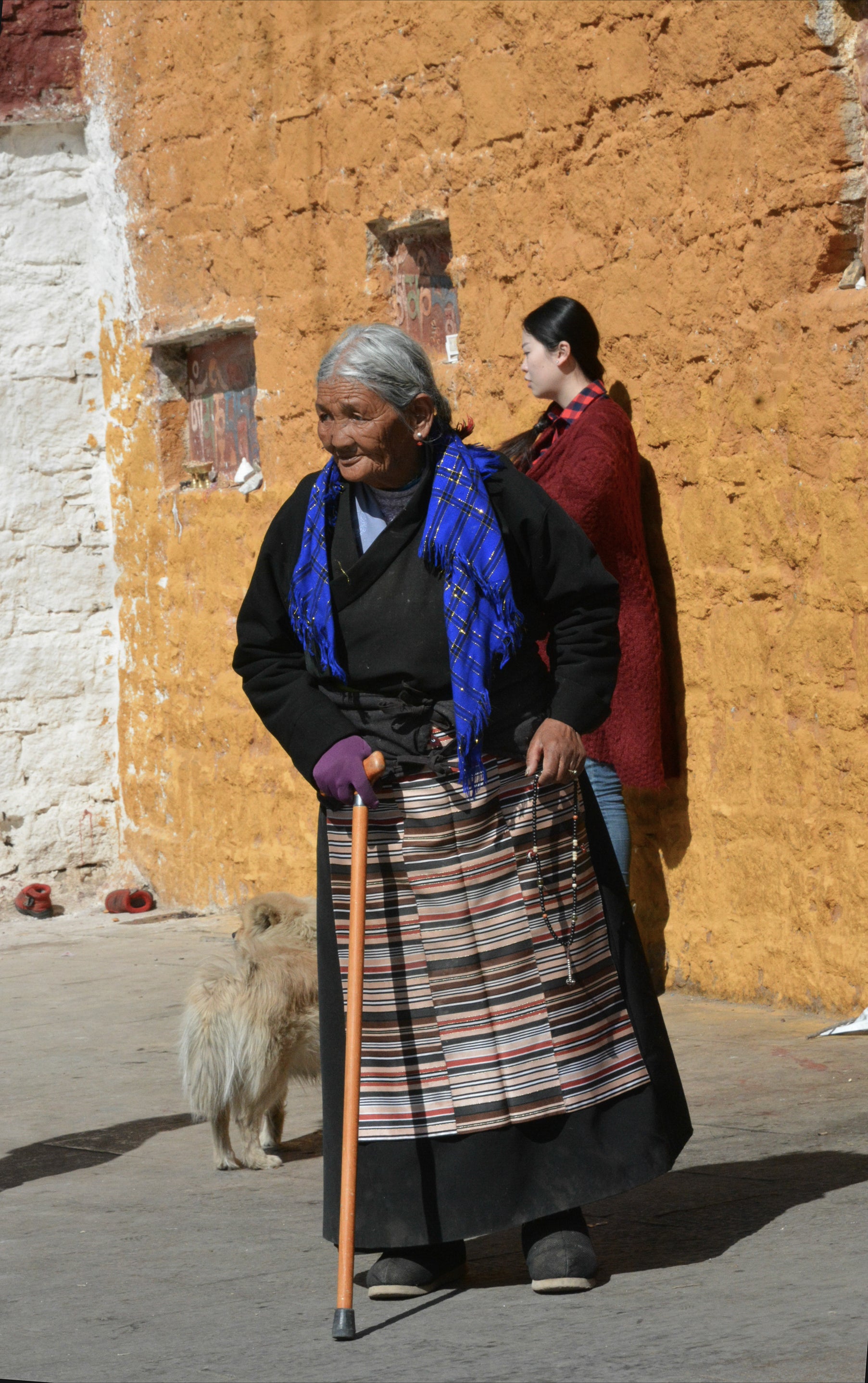THE TIBETAN PANGDEN
|
Stripes appear in many Tibetan weaves, especially in pieces worn by women. In western Tibet, stripes make up the pattern of the back warmer, a folded woven cloth wrapped around the waist, fastened in the front with a silver ornament. In nomad areas, stripes of felted cloth border sheepskin chubas. The most universal remains the pangden, or apron, donned by women in most Central Tibetan areas. Woven from fine dyed wools arranged in stripes of contrasting color, the pangden offers many variations involving the length, width of the stripes, color combinations and even materials. Worn over the chuba, the pangden indicates married status. In old Tibet, women wore it long, though the length has gone from knee length to mid-calf with changing trends. Woven from narrow strips cut to length and stitched together, it plays on the interrupted stripes. Nomads from the Chang Thang areas preferred larger, bold colored stripes while city dwellers favored finer stripes in more subdued colors, which indicated their use of finer wool and more skilled artisans. Palden weavers originally worked with wool, and used narrow backs strap looms. Later, to obtain finer stripes at lower cost, they began using cotton or silk. . |

